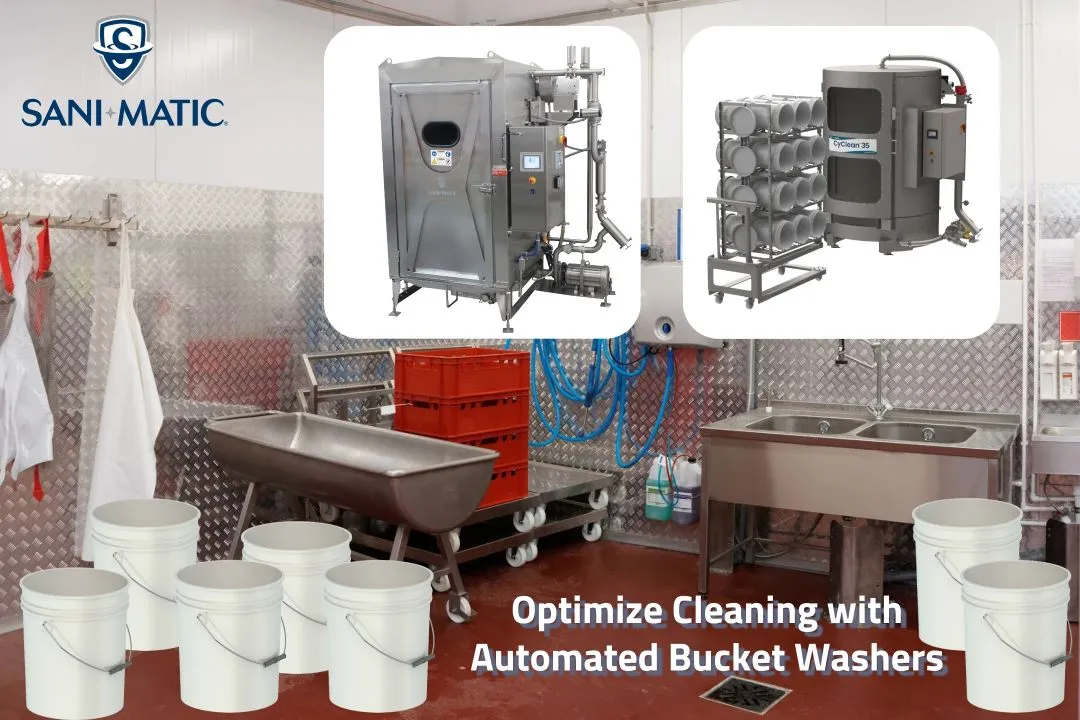If you’re involved in any type of food, personal care, nutraceutical, or other processing – chances are that you have 3-gallon buckets, 5-gallon buckets, or other similar buckets that hold product. It is also likely that you are washing these buckets. Traditional manual methods may seem sufficient, but they often fall short in efficiency and consistency. Transitioning to automated bucket washers offers significant advantages for modern facilities.
Challenges of Manual Bucket Washing
- High Water Usage: Manual washing methods often result in excessive water consumption, driving up costs and wasting resources.
- Excessive Chemical Use: Along with high-volume water usage often comes high levels of chemical usage, which can quickly become wasteful. Inconsistent application can also lead to varying results in cleaning effectiveness.
- Labor-Intensive: Manual cleaning demands significant labor, pulling personnel away from other essential tasks.
- Inconsistent Results: Cleaning standards vary by individual, leading to inconsistent sanitation quality across shifts.
Advantages of Automated Bucket Washing
Automated washing systems, such as parts washers and cabinet washers, provide superior alternatives to manual methods:
- Data Reporting for Compliance: With solutions like SaniTrend® Cloud, automated systems can capture and report cleaning data to meet data recording requirements as outlined by the Food Safety Modernization Act (FSMA) and defined through Hazard Analysis Critical Control Point (HACCP) requirements, ensuring regulatory compliance.
- Water and Chemical Efficiency: Automated systems use precise amounts of water and chemicals, reducing waste and operating costs.
- Labor Savings: Automation minimizes the need for manual labor, freeing employees for more productive roles.
- Repeatable Cleaning Processes: Automated systems deliver consistent, repeatable cleaning results regardless of operator variability.
A Full and Thorough Cleaning Cycle
If you’re familiar with Clean-In-Place (CIP) processes, automated bucket washers follow a similar cleaning cycle but for automated Clean-Out-of-Place (COP) of the buckets. These automated washers streamline the cleaning process through dedicated cleaning phases:
- Pre-Rinse: Removes loose and heavy product soils and prepares buckets for thorough cleaning during the chemical wash phase.
- Chemical Wash: Detergent chemical (often alkaline) is automatically dosed and controlled to a certain concentration, typically in the 1.0 – 4.0% chemical range (by volume). The wash solution is also typically heated to an elevated temperature, typically 120 °F – 160 °F.
- Post-Rinse: A final rinse or set of rinses ensures that all cleaning agents are effectively removed from the buckets.
- Sanitization: Chemical or hot water (e.g., 180 °F) sanitization can occur post-cleaning to ensure a food-safe contact surface after removal of the product soils.
- Drying: For processes requiring buckets to be dry before running product, some automated bucket washers can also be equipped with automated hot air-drying systems.
These systems aren’t limited to bucket washing—they can also clean and sanitize other process parts, providing a versatile solution for your facility.
Explore Automated Washers
Sani-Matic offers cutting-edge automated washing solutions tailored to your needs:
- CyClean™ 35 Parts Washer: An offering within the CleanWorx™ brand of products, this standardized entry-level washer is compact and efficient, perfect for facilities looking for something easy and quick-to-deliver with comprehensive manuals and support.
- SaniCab® P Cabinet Washers: Designed for larger-scale processes with multiple models and sizes and with advanced cleaning features, this system can be tailored to meet your exact requirements for cleaning.
Transition to automated bucket washing to enhance efficiency, reduce resource consumption, and meet stringent sanitation standards. Contact Sani-Matic to find the right solution for your operation.


